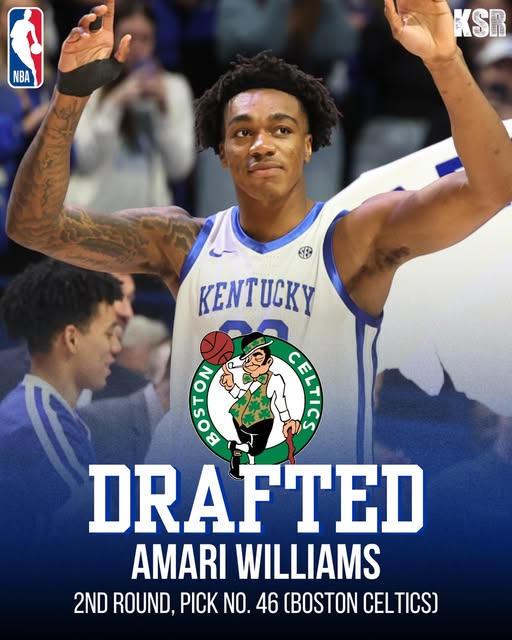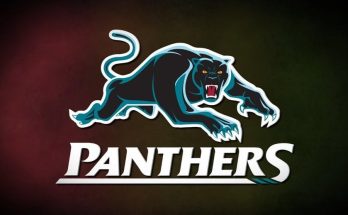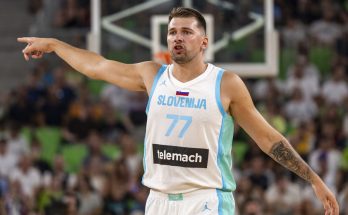Amari Williams’ dream of making it to the NBA officially became reality as he was selected in the draft and is set to begin his professional journey with the Boston Celtics on a two-way contract. The versatile big man, known for his defensive presence and high basketball IQ, becomes the second Kentucky Wildcat chosen within five picks—further proof of the program’s continued pipeline to the pros.
It’s a monumental moment not just for Williams, but for the storied Kentucky basketball program. In a draft that saw elite talent flying off the board, Williams’ name being called serves as a powerful statement about his value, potential, and readiness for the next level. While many speculated he would land somewhere in the second round, few predicted the Celtics would be the franchise to give him his first shot—and even fewer anticipated he’d be scooped up so quickly after a fellow Wildcat teammate.
Williams’ collegiate journey is a testament to growth, resilience, and the value of sticking to the process. Starting his college career as a promising but raw frontcourt talent, he gradually honed his skills year over year. By his final season, he emerged as a true force on both ends of the court—an elite shot blocker, an improved rebounder, and a more polished offensive contributor. At 6’10” with a solid frame, Williams offered Kentucky not just rim protection but also a switchable defender capable of holding his own against quicker guards and wings when necessary.
His ability to anchor a defense and his ever-improving offensive game likely caught the eye of the Celtics’ front office, a franchise that places a premium on defensive versatility and player development. Boston’s history of maximizing the potential of two-way players only adds to the excitement surrounding this move. The Celtics are known for molding gritty, defensively engaged players into key rotational contributors, and Williams fits that mold perfectly.
As for his contract situation, a two-way deal gives Williams the flexibility to split time between the NBA and Boston’s G League affiliate, the Maine Celtics. This setup provides the ideal environment for continued growth, as it allows him to adjust to the pace and physicality of the NBA while receiving consistent minutes and focused development in the G League. Many players have used the two-way route as a springboard to long-term NBA careers, and Williams seems poised to follow in their footsteps.
Celtics fans should be excited about what Williams brings to the table. Though he might not be a household name just yet, his ability to impact the game without demanding touches makes him a valuable asset in any rotation. His timing as a shot blocker, his willingness to set hard screens, and his unselfishness on offense are all traits that align with Boston’s team-first identity. While he may not immediately crack the Celtics’ loaded frontcourt rotation, he’s the type of player who will make coaches take notice in practice, in scrimmages, and during G League assignments.
One of the most appealing aspects of Williams’ game is his defensive mindset. He’s not the kind of player who chases stats—he’s driven by making the right play, contesting every shot, boxing out on rebounds, and communicating with teammates on switches. He’s a quiet leader, someone whose presence is felt more in his actions than in his words. That kind of maturity is rare in young players and could be a key reason Boston felt confident investing in his development.
On offense, Williams is a work in progress, but that shouldn’t be viewed as a limitation. He’s shown flashes of a developing mid-range shot, he finishes strong around the rim, and he’s particularly effective as a roller in pick-and-roll situations. His passing out of the post is underrated, and he often makes the right decision under pressure. Given the Celtics’ current roster makeup, it’s unlikely Williams will be asked to do too much offensively early on—which could actually work in his favor, allowing him to master his role before expanding it.
There’s also the question of fit—how Williams complements the Celtics’ existing personnel. With veteran big men like Al Horford and Kristaps Porziņģis anchoring the frontcourt, Williams won’t be rushed into the fire. Instead, he’ll have the opportunity to learn from seasoned professionals, soak in valuable knowledge, and develop at a comfortable pace. In a league where big men are increasingly asked to be mobile, skilled, and defensively sound, Williams checks many of the right boxes.
Beyond the on-court implications, this moment carries immense personal significance for Williams. From putting in the extra hours at practice, to dealing with setbacks and injuries, to navigating the intense pressure of playing at Kentucky, every step has been leading to this. His draft night celebration—likely filled with emotion, family support, and the quiet satisfaction of knowing he earned this—marks the beginning of a new chapter, one that could define the next decade of his life.
It’s also a proud moment for the Kentucky program. Having two players selected so closely together reinforces the school’s reputation as an NBA talent factory. For current and future recruits, Williams’ path sends a clear message: even if you’re not a projected lottery pick or a five-star recruit, development and determination at Kentucky can still launch you to the pros. That’s the kind of legacy that keeps a program relevant, generation after generation.
For Celtics fans wondering what to expect, think of Williams as a long-term investment. He may not be an instant contributor, but his trajectory points toward a valuable role player who does the dirty work, brings energy, and eventually earns the trust of his teammates and coaches. Players like Williams often become the glue guys—the ones who keep the team humming even when the stars aren’t on the floor. And in Boston’s title-driven culture, every rotation piece matters.
The modern NBA places an immense premium on players who can defend multiple positions, make smart decisions, and fit seamlessly into a team concept. Williams, despite being a second-round selection, has the raw tools and mental makeup to evolve into just that kind of contributor. He’s the kind of player who might surprise casual fans but won’t surprise those who’ve watched his journey closely.
Of course, challenges lie ahead. The jump from college to the pros is steep, and adjusting to the speed, physicality, and skill level of NBA competition takes time. But Williams has already shown that he thrives in environments that demand accountability, effort, and constant improvement. He’s not afraid to do the little things—dive for loose balls, box out on every possession, and make the extra pass. Those habits will serve him well as he navigates the transition.
In a broader context, Williams’ selection is also a testament to the changing nature of NBA scouting and development. Front offices are increasingly valuing players who may not be stars today but show the potential to blossom with the right structure and mentorship. In Boston, Williams has landed in one of the best possible situations for his development. With a championship-caliber roster, elite coaching, and a supportive G League pipeline, the tools are all in place for him to succeed.
As he steps onto the court in Celtics green for the first time—whether it’s in Summer League, G League, or a limited role in the regular season—Amari Williams will carry with him not just the pride of personal achievement, but the hopes of those who’ve believed in him from day one. His journey is far from over, but tonight, he takes a huge step forward into the world he’s worked so hard to reach.
Boston has found a diamond in the rough, and if Williams’ past is any indication, he’ll do everything in his power to prove that he belongs.



